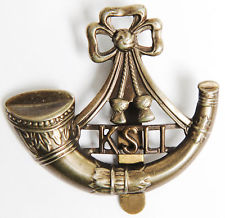Personal Details
Born: 23 July 1883 in Chorlton, Manchester, Lancashire.
Family: He was the fourth and youngest child of Samuel and Harriet Ralphs. No marriage can be located for Stephen.
Residence: In 1891 the family were living at 31 Lincroft Street, Hulme, Chorlton, Manchester. According to Stephen’s school records they were still at the same address the following year. By 1901 Stephen had left Manchester and was boarding with his cousin’s family at 128 Wrexham Road, Whitchurch, Shropshire. Ten years later he was still living with the Corfield family but the address had changed to 144 Wrexham Road. At the time of his death in 1935 he was living at Lostford Manor, Hodnet, Shropshire.
Employment: Stephen attended Ducie Technical School in Manchester and then worked as a bricklayer in Whitchurch until at least 1911. Both his father and his cousin were in the same trade.
Died: 4th August 1935 in the Cottage Hospital, Market Drayton, Shropshire.
Military Details
Regiment: King’s Shropshire Light Infantry (previously Cheshire Regiment)
Rank: Private
Service Number: 34736 (previously 686140)
Date of Enlistment: Not known
Date of Discharge: Not known
Reason for Discharge: Not known
Stephen was awarded the Campaign Medals (British War Medal, and Victory Medal)

The British War Medal (also known as 'Squeak') was a silver or bronze medal awarded to officers and men of the British and Imperial Forces who either entered a theatre of war or entered service overseas between 5th August 1914 and 11th November 1918 inclusive. This was later extended to services in Russia, Siberia and some other areas in 1919 and 1920. Approximately 6.5 million British War Medals were issued. Approximately 6.4 million of these were the silver versions of this medal. Around 110,000 of a bronze version were issued mainly to Chinese, Maltese and Indian Labour Corps. The front (obv or obverse) of the medal depicts the head of George V. The recipient's service number, rank, name and unit was impressed on the rim.
The Allied Victory Medal (also known as 'Wilfred') was issued by each of the allies. It was decided that each of the allies should each issue their own bronze victory medal with a similar design, similar equivalent wording and identical ribbon. The British medal was designed by W. McMillan. The front depicts a winged classical figure representing victory. Approximately 5.7 million victory medals were issued. Interestingly, eligibility for this medal was more restrictive and not everyone who received the British War Medal ('Squeak') also received the Victory Medal ('Wilfred'). However, in general, all recipients of 'Wilfred' also received 'Squeak' and all recipients of The 1914 Star or The 1914/1915 Star (also known as 'Pip') also received both 'Squeak' and 'Wilfred'. The recipient's service number, rank, name and unit was impressed on the rim.

